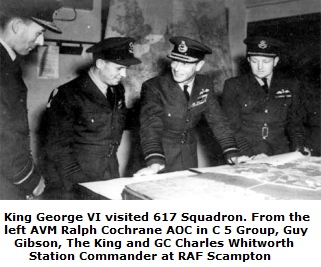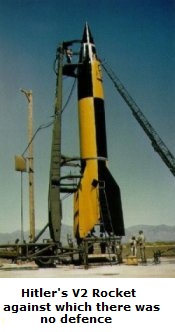
|
The Aftermath |
|
|
 In order to repair the damage before the winter rains, a huge labour corps was drafted in and set to the work of repair, including 20,000 from the Todt Organisation then working on the West Wall defences against an Allied cross-Channel invasion. Nor again, if the damage had not been severe, would the Germans have troubled to install anti-aircraft defences and torpedo nets at dams, which had previously lacked them. All the evidence seems to be that the damage was indeed serious, but that the Germans showed immense vigour in restoring lost facilities and industrial capacity. The political ramifications were enormous. Joseph Stalin was unable, or unwilling to believe the magnitude of the losses suffered by the Arctic conveys. Moreover, frustrated by the apparent unwillingness of the Western Allies to launch a “Second Front” in the west he accused Roosevelt and Churchill of allowing “Mother Russia bleed, waiting for the Red Army to win the war for them” before intervening. Relations between Stalin and his Western allies were at a nadir. The excellent PR photographs showing the flooding in the Mohne and Eder valleys went some way to healing the rift, convincing Stalin that Britain and America were serious about the war against Germany. Stalin even went as far as sending his personal congratulations to Churchill and the RAF. |
 There was a vocal and growing lobby in the United States against the agreement by which the War in Europe should take precedence over the war against Japan. Once again the photographs of the devastation caused by the flooding helped to keep the American’s attention focussed on Europe. This was important since without US aid it is unlikely that the invasion of Western Europe through Normandy could have occurred in June 1944. Estimates of the impact of the scaling down of the US offensive in Europe suggest that the European War could have lasted for an additional two years, giving the Germans ample time to develop their ballistic missile, jet fighter, jet bomber and atomic weapons programs. The Germans even had plans to bomb New York or Washington with a so-called “dirty bomb”. Not and Atomic bomb of the fission type but a high explosive device encased in nuclear material that when exploded would contaminate large areas with highly radioactive dust. Rather similar to the type of weapon favoured by al-Qaeda today. While plans developed by Eugen Singer to develop a hypersonic delivery platform were highly speculative, plans for the Horton HO-18 “Amerika Bomber” and Werner Von Braun’s two-stage ballistic missile were not and could have been delivered within two year. This would have been aided by the absence of the weight of the US Eighth Air Force’s daylight contribution to the allied strategic bomber offensive. |
 At home, the photographs of the damage taken by F/O FG Fray of 542 (PR) Squadron based at RAF Benson, appeared in all of the papers and had a tremendous affect on morale at a time when things looked very bleak for Britain. Leaflets showing the photographs of the flooding were dropped in large quantities into the occupied countries with a similar marked affect on morale. Summing up, the British Official History states that, in regard to both the physical and the moral impact on Germany, ‘the total effect was small’. But though the damage was certainly less irreparable than the first British claims and newspaper reports suggested, it is difficult to accept this as a sufficient verdict. The post-war assessment of bomb damage to German industry revealed some interesting facts about the effects of bombing a factory. If the building suffered only blast damage such as loosing its roof the machine tools on the shop floor were often relatively undamaged. Providing the machines could be protected from the elements, particularly rain and other forms of moisture while the roof was replaced, they could often be brought back into operation relatively quickly. In the factories flooded as a result of breaching the Mohne Dam, the machinery was flooded and thus completely ruined. Hitler and Goebbels would hardly have been so upset, as records show they were, if the damage had been only of a minor or fleeting nature. Albert Speer the Reich Minister for Armaments described the damage as “the catastrophe in the West”. |